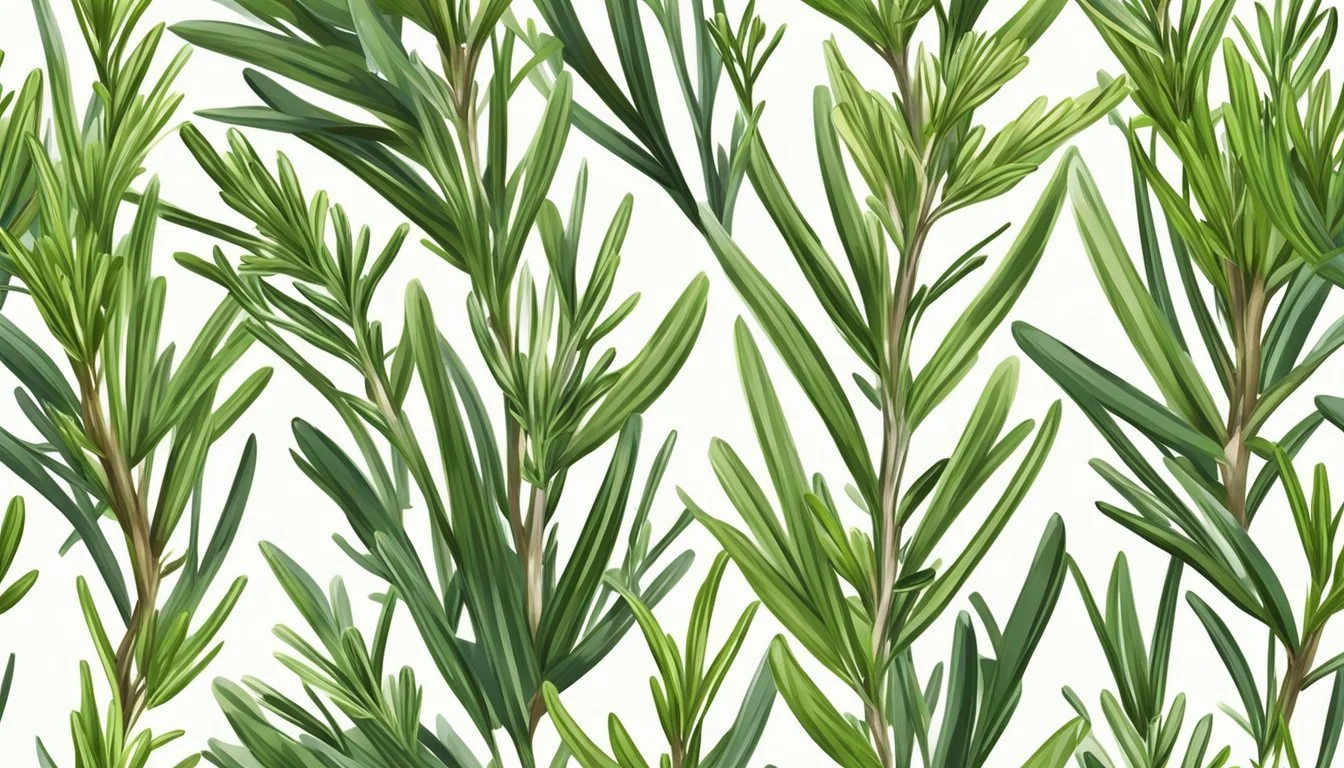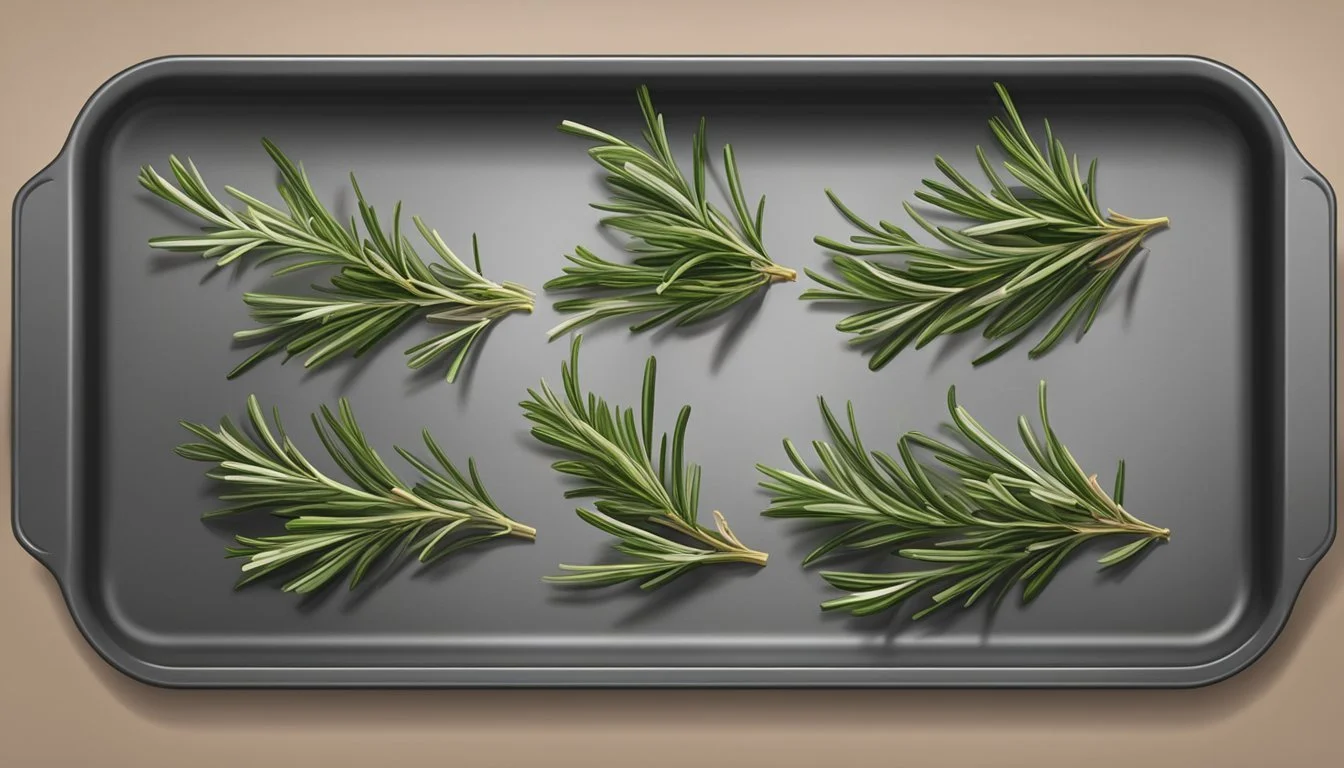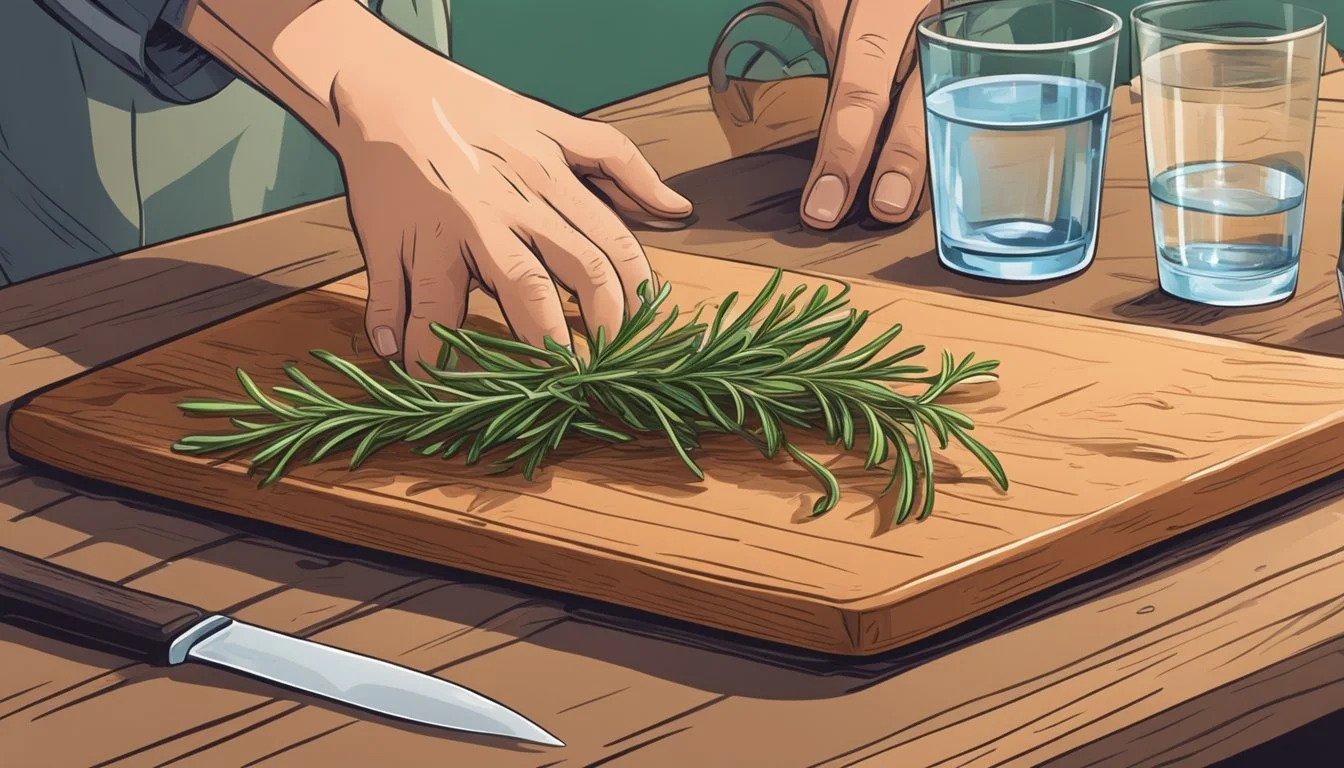Reviving Limp Rosemary
Tips for Restoring Your Herb's Vitality
Rosemary, an evergreen herb with a fragrant aroma, is a cornerstone in culinary practices around the world. It is prized for its distinct, piney flavor and its ability to transform dishes, whether roasted meats or seasoned vegetables. Yet, home cooks often encounter a common issue: limp rosemary. The fresh, crisp needles can quickly become wilted and lifeless, seemingly destined for the compost. However, reviving limp rosemary is a simple process that restores its vibrancy, ensuring it continues to impart robust flavors to your cooking.
The key to reviving rosemary lies in understanding its needs and the signs of distress. Excess water or prolonged dryness, coupled with improper storage, can lead to a once vibrant herb losing its firmness and aroma. But all is not lost when faced with wilted rosemary. Techniques such as a brief soak in an ice water bath can shock the herb back to life, rehydrating the needles and bringing the plant’s natural oils back to the surface. With the proper care and revival methods, rosemary can be rejuvenated, ensuring its place in your kitchen as a fresh and potent contributor to your culinary creations.
Understanding Rosemary
Rosemary is a highly aromatic herb favored for its robust flavor and fragrance, making it a staple in culinary and aromatic applications. To achieve optimal growth and maintain its prized characteristics, understanding its botanical profile, cultivation requirements, and common issues is essential.
Botanical Profile of Rosemary
Rosemary (Rosmarinus officinalis), part of the mint family (Lamiaceae), is a perennial herb known for its needle-like leaves and woody stems. It typically blooms with small blue flowers, which add to its visual appeal. The plant thrives in full sun conditions and prefers well-draining soil, which mimics its native Mediterranean habitat.
Cultivation and Care
For successful cultivation, select a site that provides at least six hours of direct sunlight each day. Rosemary plants favor well-draining soil; incorporating organic matter or compost can improve soil condition. In terms of watering frequency, allow the soil to dry out between waterings, as overwatering can lead to root rot. Regular pruning encourages a robust and bushy growth pattern, aiding in air circulation and preventing fungal diseases.
Ideal Conditions for Rosemary Sunlight Full sun (6+ hours per day) Soil Type Well-draining, with added compost or organic matter Watering Moderate; allow soil to dry between waterings Pruning Frequent, to promote bushiness and airflow
Common Pests and Diseases
Rosemary is generally hardy but may occasionally succumb to pests like aphids and diseases such as powdery mildew. To mitigate these issues, ensure proper airflow around the plants and avoid overwatering. Applying mulch can regulate soil moisture and temperature, deterring pests and promoting overall plant health. If pests are identified, applications of insecticidal soap or neem oil may be used as organic control measures.
Revival Techniques for Limp Rosemary
To revive limp rosemary, it's crucial to apply immediate interventions aimed at alleviating stress and to establish a consistent, suitable care routine that promotes recovery and prevents future health issues.
Immediate Steps to Revive Rosemary
Immediate action is required to stop further damage to a limp rosemary plant. Here's a step-by-step approach:
Assess the Soil: Check for moisture levels. If the soil is soggy, root rot could be a concern. On the other hand, dry, crumbly soil may indicate under-watering.
Water Adjustments: For overwatered rosemary, cease watering immediately and let the soil dry out. If under-watered, give the plant a thorough soak in a bowl until the soil is moist, not saturated.
Trim Damaged Roots: Carefully remove the plant from its pot, trim any blackened or mushy roots, then repot in fresh, well-draining soil.
Prune: Gently trim back any yellowing or dead foliage to reduce stress on the plant and encourage new growth.
Long-Term Rosemary Care
Once the rosemary has been stabilized, maintain its health with proper care:
Soil Selection: Plant rosemary in slightly alkaline, well-draining soil with a pH between 6.0 and 7.0.
Watering Schedule: Establish a consistent watering schedule, allowing the soil to dry out slightly between watering but never become completely parched.
Fertilizing: Use a balanced fertilizer, such as one with an 8-8-8 or 10-10-10 ratio, sparingly to avoid stressing the plant.
Drainage: Ensure the pot has drainage holes and avoid using a drip tray, as standing water can cause root rot.
Preventing Future Problems
To keep rosemary vibrant and less prone to becoming limp:
Climate Considerations: Rosemary thrives in warm, sunny climates but can be grown in containers in cooler areas to move indoors during harsh winters.
Mulching: Apply mulch to help with soil moisture retention and temperature regulation, particularly for outdoor plants.
Regular Checks: Frequently inspect rosemary for signs of distress, like yellowing leaves, and adjust care as needed.
Proper Trimming: Regularly trim the plant to encourage airflow, which helps prevent fungal diseases and promotes healthy, bushy growth.
Culinary Uses of Revived Rosemary
Revived rosemary's intense aroma and distinct flavor make it an essential herb in various culinary applications, from flavor-infusing to creating harmonious herb blends.
Infusing Flavors with Rosemary
Revived rosemary has the capacity to infuse oils and embody their flavors with its robust aroma. To infuse olive oil, gently heat the oil and immerse the rosemary to steep for several minutes, creating an aromatic oil perfect for dressings and cooking. Teas can also benefit from this herb by steeping a sprig in boiling water, resulting in a beverage with both flavor and potential health benefits.
Recipes Featuring Rosemary
With its piney taste, rosemary is a standout herb in many dishes. For roast lamb, inserting slivers of garlic and rosemary into the meat can impart remarkable depth of flavor. Rosemary Olive Oil Bread emerges from the oven with a golden crust and moist crumb, made more delicious by incorporating this fragrant herb. Similarly, rosemary potatoes showcase how simple ingredients like potatoes and olive oil are elevated when roasted with sprigs of rosemary, resulting in a classic side dish that's both crisp and savory.
Pairing Rosemary with Other Herbs
Rosemary pairs well with a variety of herbs, enhancing complex flavor profiles. When combined with thyme, parsley, and garlic, it creates a hearty blend suitable for marinades. In contrast, merging rosemary with mint or sage can add freshness to lighter dishes. While oregano and basil can compete with rosemary's intensity, they can be balanced to complement Mediterranean-inspired recipes. It’s imperative to experiment with amounts to achieve the desired taste without overwhelming the dish.
Harvesting and Storing Rosemary
Successfully reviving limp rosemary starts by understanding proper harvesting and storage techniques. Ensuring rosemary remains crisp and aromatic is pivotal for both roasting and seasoning.
Effectively Harvesting Rosemary
When harvesting rosemary, always use sharp pruning shears for a clean cut. This promotes healthy plant growth. The ideal time to harvest is in the morning after the dew has dried but before the heat of the day. Cut back the stems by up to two-thirds to encourage bushier growth. Choose the sprigs on the outside that are not woody and leave the inside stems to mature. Consistent pruning not only helps in harvesting the herb but also keeps the plant vigorous and productive.
Method:
Use sharp shears
Cut in the morning
Select non-woody, outer stems
Prune up to two-thirds of stem length
Frequency:
Regular pruning promotes new growth
Do not overharvest at once
Optimal Storage Solutions
For storage, the key is to maintain the rosemary's freshness. If storing rosemary short-term, lightly wrap the sprigs in a damp paper towel and place them in a resealable bag. Store in the refrigerator; this method can keep rosemary fresh for up to a week. For long-term storage, air-drying or freezing the rosemary ensures it retains its flavor for months.
Short-term (Fridge):
Wrap in a damp paper towel
Place in a resealable bag
Store in the refrigerator
Long-term (Drying or Freezing):
Hang-dry in a dark, well-ventilated area for 10 days
Alternatively, freeze sprigs in a single layer before transferring to a container
Label and date for future reference
Note: Avoid storing fresh rosemary at room temperature, as it may lead to wilting and loss of flavor quickly. Fresh herbs like rosemary and parsley benefit from being treated similarly to vegetables when it comes to refrigeration – think of it as a vital step in preserving their shelf-life.
Creative Uses Beyond Cooking
Beyond its culinary uses, rosemary serves a multitude of purposes that enhance everyday life, from home décor to health improvement, without losing its aromatic essence.
Rosemary as a Decorative Element
One can utilize rosemary in various decorative ways due to its vibrant green foliage and pleasant aroma. A classic approach is incorporating rosemary sprigs into floral arrangements, adding both texture and fragrance. For festive occasions, intertwining rosemary with string lights produces an inviting ambiance. Moreover, rosemary serves well as a garnish not only on plates but also when adorning serving trays or cheeseboards, pairing exquisitely with brie and orange slices to create a rustic, yet elegant display.
Health Benefits of Rosemary
Rosemary is lauded for its health benefits, being rich in nutrients and antioxidants. This herb is a good source of iron, crucial for oxygen transport in the body. It is known for its potential to improve digestions, enhance memory and concentration, and provides anti-inflammatory benefits. Rosemary's essential oils are used in aromatherapy to relieve stress, and a simple whiff may even help boost one's mood and energy levels.
Troubleshooting Rosemary Issues
Reviving rosemary requires identifying distress symptoms, correcting environmental stressors, and optimizing soil and water conditions. This targeted approach can restore vitality.
Identifying Symptoms of Distress
When rosemary exhibits signs of distress, it is crucial to assess the symptoms accurately. Wilted, dried, or brittle branches often indicate underwatering or excessive heat. If leaves are turning yellow or the plant stops producing flowers, overwatering or a nutrient deficiency could be the culprit. Symptoms must be addressed promptly to prevent further damage.
Recovering from Environmental Stress
Rosemary thrives in a full sun location with adequate air circulation. If the plant looks wilted or stressed, ensure it receives at least six hours of direct sunlight. Inadequate light often requires transitioning the plant outdoors or supplementing with grow lights. Protective measures against extreme weather should also be taken, as harsh conditions can quickly deplete the plant's vitality.
Managing Soil and Water Conditions
Proper soil and water management are essential for rosemary's recovery:
Soil Type: Rosemary requires well-draining, sandy soil. Amend heavy soils with sand or grit to improve drainage.
Watering Frequency: Water when the top inch of soil is dry to the touch, allowing the soil to dry out between waterings to prevent overwatering.
Drainage: Ensure pots have drainage holes. Standing water can lead to root rot, a potential death sentence for the plant.
Climate, too, affects these conditions; gardeners should adjust care to their local environment, respecting rosemary's preference for a Mediterranean climate.





